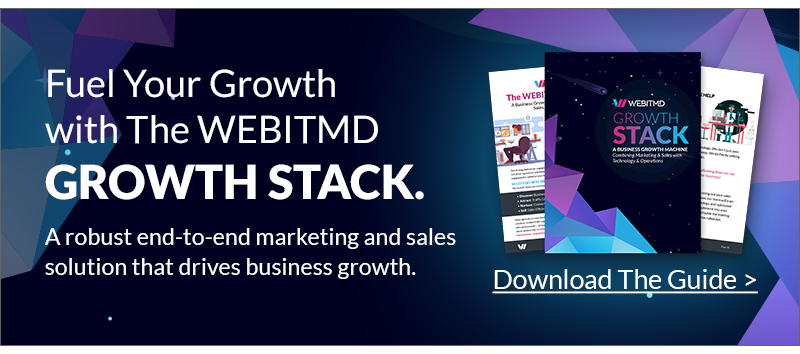Peanut butter and jelly. Milk and cookies. These are some of history’s greatest duos. But what about sales and marketing? In so many businesses, these departments are siloed away from one another – two flavors not to be mixed or blended despite their close proximity. At least, that’s been “the way it’s been” for a long time.
But it doesn’t have to be.
Refining your sales and marketing alignment is a common theme for business owners to improve revenue and boost day-to-day operations. Case in point, aligning your sales and marketing functions together has been shown to increase customer retention by 36% and gain 38% higher sales win rates.
This growth will give you better leads and make a harmonious environment where everyone works together rather than competing. If that sounds good to you, then keep on reading.

Sales and Marketing Alignment Breaks the Mold of “Us vs Them”
Sales has no leads to follow up with and is pressured to cold call. Marketing handed over plenty of qualified leads over the last quarter and doesn’t understand why the sales team is coming up short. Thus the blame game begins… and continues. We’ve all heard of, or personally been in, a situation similar to this on all sides. It is certainly not fun.
This misalignment isn’t a new concept – it’s created a lot of bad blood in even the best of companies. And even today, there are still some long-standing disagreements that still exist around lead quality, the handoff, and so on.
The key here is focusing on building the team’s rapport with one another and prioritizing collaboration and an open environment of understanding. This will lead to breaking down some of those conventional barriers. The more you can tie goals of the two departments together, the easier it will be to get them to start seeing each other as teammates rather than competitors.
If you still aren’t convinced that sales and marketing alignment need to be a major focus for your business, here are three benefits that may convince you otherwise:
#1: Improved Lead Nurturing Quality
If you’re in sales, does it sometimes feel like marketing is not using the right pain points to attract the right leads? If you’re in marketing, does it sometimes feel like sales might not be timing outreach properly based on the type of customer and their expectations? By Unifying departments in your company, you inevitably cause a deeper understanding of what each one is going through and their knowledge of the prospect at any given stage of the marketing and sales funnel.
Due to the fact that sales has the opportunity to ask forward, succinct questions, they possess thorough knowledge about what “hooks” someone into buying your product or service. That information is priceless to marketing, who can pull from those common questions and create collateral that speaks and resonates directly with those target customers. With sales insights, marketing can refine lead nurturing processes to pinpoint exactly what the (hopefully) soon-to-be customers are looking for and develop content to meet them at every stage of their buyer’s journey.
#2: Increased Process Efficiency
There’s a reason we like others to spot-check work – because if you’ve been looking at it for too long, things are easy to miss. Effective sales and marketing alignment institutes a quality check on both teams to identify places where there are bottlenecks, and where more opportunities lie to tighten or spread out the buying cycle. Whether it’s top, middle, or bottom of the funnel, or marketing-qualified vs. sales-qualified, combining the entire cycle in one place puts everyone’s eyes across the board to see where leads might be dropping off, going stale, or choosing someone else.
Cutting down on the time it takes to find ideal leads (which we’ll go over next) adds to revenue and gives your team more opportunity to expand and find better ways to report, create content, and communicate more effectively. In short, when you’re not squinting through the trees, you can see the whole forest.
#3: Narrowing Your Ideal Customer
We’ve talked about the value of an ideal customer profile before – and this value cannot be understated. Taking all business that comes through is, simply put, just not good business. Sales and marketing alignment narrows down who will be an ideal customer more effectively than making the call separately, or worse yet, having differing ideas of an ideal customer.
If sales knows which customers are better fits based on the demo and bid phases, marketing can update messaging to attract companies that fit the guardrails of size, revenue, and budget so the sales cycle can be minimized, and more profit is generated.
Start With Marketing and Sales Alignment, Then Grow
Marketing and Sales alignment starts with getting your people on the same page. By doing so, you’ll combine the unlikely duo of sales and marketing to provide customers with clear messaging and unite your departments with singular mission and goals. This is how the power of “smarketing” can truly change the face of how business is done.
With a strong focus on sales and marketing alignment, and a constant process of communication to adjust while getting there, you can join the two teams together into one well-oiled, working machine – with a PB&J break here and there encouraged.






.jpg)



.jpg)





![5 Reports to Elevate Your HubSpot Sales Dashboard [+ Examples]](https://blog.webitmd.com/hs-fs/hubfs/Imported_Blog_Media/6-winning-examples-of-a-hubspot-sales-dashboard-2.png?width=767&name=6-winning-examples-of-a-hubspot-sales-dashboard-2.png)